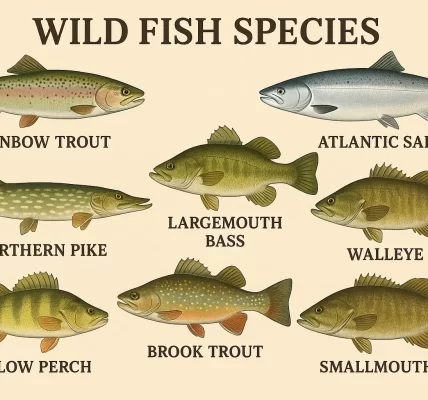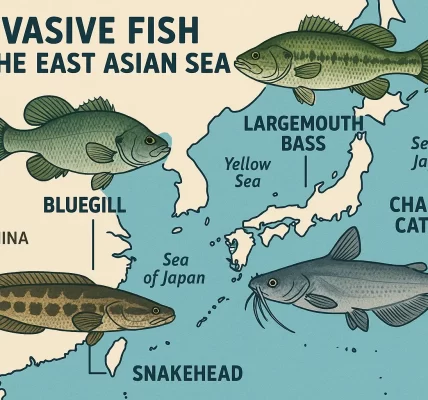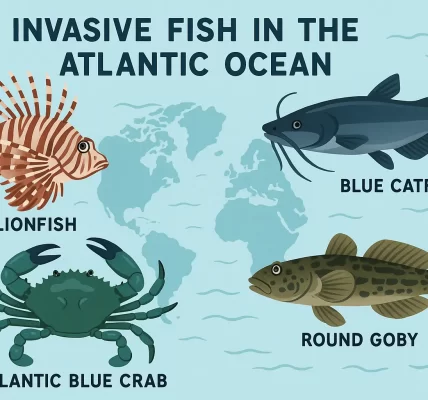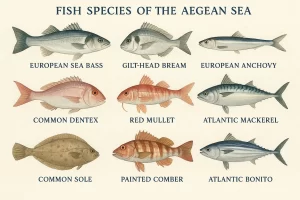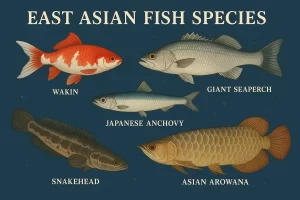East Asian Fish Species
Exploring East Asian Fish Species: Diversity Beneath the Surface
The Far East, encompassing countries like China, Japan, Korea, Vietnam, and parts of Southeast Asia, is home to some of the world’s most fascinating and culturally significant fish species. From the tranquil koi ponds of Japan to the bustling rivers of the Mekong Delta, East Asian waters are rich with biodiversity, tradition, and ecological significance.
Overview of East Asian Aquatic Ecosystems
East Asia’s fish diversity stems from its wide range of aquatic habitats: cold mountain streams, large river systems, tropical coasts, and marine archipelagos. These ecosystems support both freshwater and marine species that are vital to regional economies and cuisines.
Key Aquatic Regions in East Asia
- Yangtze River (China) – One of the longest rivers in the world, home to endemic species.
- Mekong River (Vietnam, Cambodia, Laos, Thailand) – Known for massive freshwater biodiversity.
- Sea of Japan, East China Sea, and South China Sea – Support commercially important marine fish.
Iconic Freshwater Fish Species
1. Koi (Cyprinus rubrofuscus)
Originally bred in Japan, koi fish are a domesticated variety of the common carp. Known for their vibrant colors, they symbolize luck and prosperity in East Asian cultures.
- Habitat: Ornamental ponds and calm freshwater bodies
- Significance: Featured in festivals, art, and spiritual practices
2. Chinese Paddlefish (Psephurus gladius) (Critically endangered, possibly extinct)
Once native to the Yangtze River, the Chinese paddlefish was one of the largest freshwater fish. Due to overfishing and habitat loss, it is now considered extinct.
- Size: Could reach lengths over 7 meters
- Threat: Dams and industrial development
3. Snakehead Fish (Channa spp.)
Native to China and Southeast Asia, snakeheads are air-breathing freshwater predators. They are popular in local diets and are also known for their invasive tendencies when introduced elsewhere.
- Behavior: Aggressive, with strong parental care
- Distribution: Found across East and Southeast Asia
Common Marine Fish in East Asia
1. Japanese Amberjack (Seriola quinqueradiata)
Locally known as “Hamachi” or “Buri,” this fish is widely consumed in sushi and sashimi. It is also farmed extensively in Japanese aquaculture.
- Habitat: Coastal waters of Japan and Korea
- Economy: Major export and culinary staple
2. Giant Grouper (Epinephelus lanceolatus)
The largest species in the grouper family, this fish is found in coral reefs across the South China Sea. Prized in seafood cuisine, it is now farmed to support wild population decline.
- Weight: Can exceed 400 kg
- Conservation: Overfishing concerns in some regions
3. Mud Carp (Cirrhinus molitorella)
Native to rivers and lakes in southern China and Vietnam, mud carp is a staple in traditional dishes and aquaculture practices.
- Diet: Omnivorous, feeds on algae and detritus
- Use: Often processed into fermented fish paste or soups
Conservation Challenges
Overfishing and Demand Pressures
As seafood demand rises in both domestic and global markets, overfishing threatens many native species, including tuna, yellow croaker, and coral reef dwellers.
Pollution and Urbanization
Industrial runoff, plastic waste, and pesticide pollution in rivers and seas have degraded aquatic habitats across East Asia, especially near dense population centers.
Climate Change
Rising ocean temperatures and changing monsoon patterns affect fish breeding cycles and migration routes, particularly in coral-rich marine zones.
Efforts Toward Sustainability
- Government-enforced fishing bans during spawning seasons
- Development of aquaculture to reduce wild harvesting
- Habitat restoration in areas like the Yangtze River basin
- International cooperation on conservation (e.g., with ASEAN, FAO)
Conclusion
The fish species of East Asia reflect the region’s deep cultural roots and biological wealth. As development and modernization continue, sustainable practices and responsible fishing are vital to preserving these aquatic treasures. Whether it’s the elegance of the koi or the culinary importance of amberjack, East Asian fish remain integral to the continent’s natural and cultural identity.


